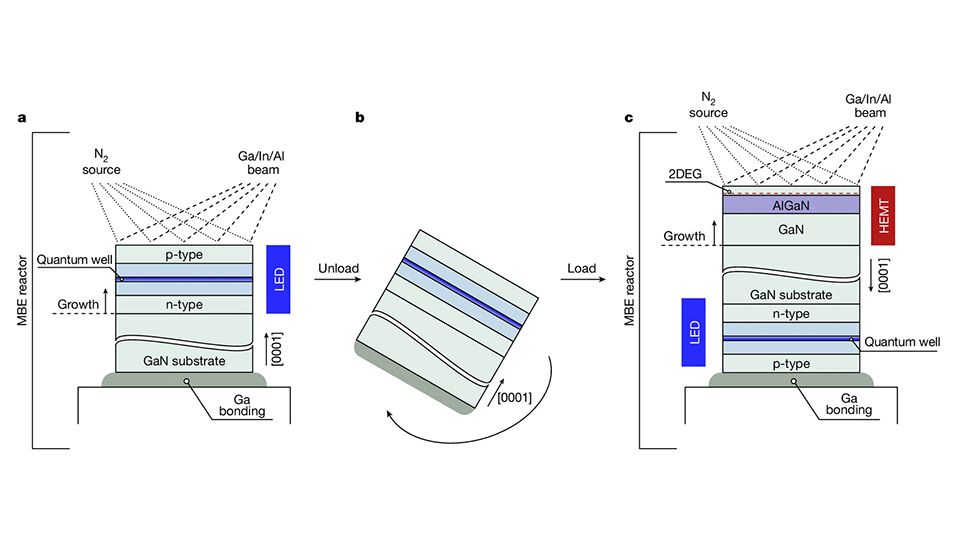Cornell University researchers, in collaboration with the Polish Academy of Sciences, have developed the first-ever double-sided chip (called a “dualtronic” chip) that integrates both optical and electronic devices, marking a major advance in semiconductor technology. . A single gallium nitride (GaN) wafer.
This innovation has the potential to reduce device size, improve energy efficiency, and reduce manufacturing costs.
The unique crystal structure of GaN wafers is the key to its dual functionality. Just as a magnet has different poles, each side of the wafer has different properties. The research team utilized the metal polarity (Ga polarity) side to create light emitting diodes (LEDs) and the nitrogen polarity (N polarity) side to build high electron mobility transistors (HEMTs). By doing so, we were able to create a configuration where one HEMT powers the LEDs of the other. This is an achievement that has never been achieved with any semiconductor material before.
limited only by your imagination
The study was led by Cornell University professors Debdeep Jena and Hoiri Grace Shin, and co-senior authors Len Van Deurzen and Eun-Gyun Kim. nature journal.
“To our knowledge, no one, even in silicon, has created a device that is active on both sides,” said co-lead author Len van Deurzen, explaining how this feat is only possible due to GaN’s polarity-dependent properties. I emphasized that it was. Traditional silicon wafers are cubic and have nearly identical sides, so this design is not possible.
The researchers say this dualtronic approach could soon be applied to make microLED displays more affordable and energy efficient. Integrating optical and electronic functions into a single chip reduces the number of components required, leading to lower manufacturing costs and a smaller device footprint. This advancement could have a major impact on display manufacturing, potentially making LED displays cheaper and more compact.
The possibilities of this technology are even greater. Because Dualtronics can use the same wafer for different functions, it has the potential to reuse a smartphone’s screen as an antenna and support wireless communications directly through the display. The polarizing properties of GaN and the versatility of dualtronic chips have the potential to transform not only displays, but also radio frequency devices, lasers, and future 5G/6G technologies.
“An obvious example is the iPhone,” explains Debdeep Jena. “Of course, it’s a phone, but there’s a lot of other stuff too. It’s a calculator, it’s a map, it can also check the internet. So there’s a bit of a convergent aspect to it. In this paper ‘s first demonstration of “dualtronics” is probably an integration of two or three functions, but it’s actually much bigger than that. ”
This breakthrough has the potential to change the way semiconductor devices are designed and utilized. Dualtronics promises to optimize both performance and resource utilization across different technologies by eliminating the need for separate chips to handle different functions. As the researchers point out, this development represents an important step forward, and potential applications are “limited only by the imagination.”


